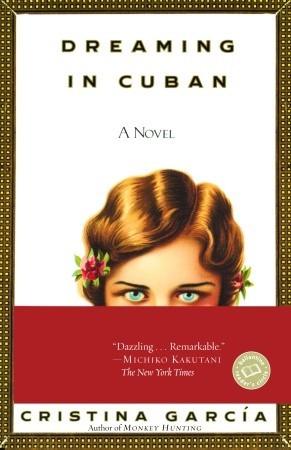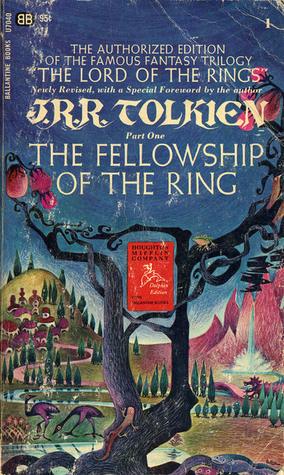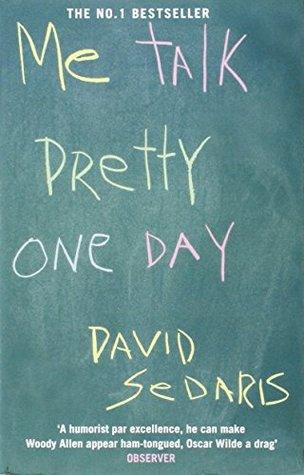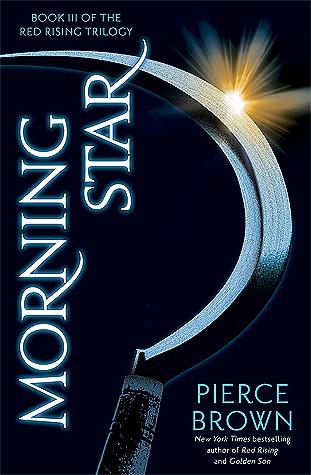Dreaming in Cuban by Cristina García Book Summary
Discover a captivating summary and key insights of "Dreaming in Cuban" by Cristina García. Explore the themes, characters, and cultural nuances of this powerful novel, along with an insightful review that highlights its significance. Dive into the rich narrative that intertwines family, identity, and the Cuban experience. Perfect for readers and book clubs alike!
Dreaming in Cuban Book Summary
Cristina García's debut novel Dreaming in Cuban weaves together the fragmented stories of three generations of Cuban women torn apart by revolution, exile, and family secrets. This multigenerational saga explores themes of cultural identity, political upheaval, and the complex bonds between mothers and daughters across time and geography. García masterfully captures the immigrant experience through magical realism and lyrical prose, creating a haunting portrait of a family divided by ideology yet united by blood. The novel offers profound insights into how political trauma shapes personal relationships and the enduring power of memory in preserving cultural heritage.
Discover deeper insights by exploring The Huntress Book Summary, Review & Key Insights for a comprehensive understanding that enriches your reading experience and connects key themes seamlessly.
Dreaming in Cuban by Cristina García - Introduction
I had no idea how deeply political history could weave itself into the personal lives of a family until I read Dreaming in Cuban by Cristina García. What really surprised me was how the book showed the Cuban Revolution not just as a distant historical event, but as something that shaped the dreams, fears, and relationships of three generations of women. It made me rethink how much history silently influences our everyday choices and family dynamics.
I picked up this book initially because I was curious about Latin American literature and wanted to explore something rich in culture and history. Plus, the mix of magical realism with historical fiction sounded intriguing—it promised a story that was both grounded and a little bit magical. At just 245 pages, it’s a manageable read that took me about a week to savor, perfect for slipping into between busy days.
If you’re someone who loves novels that blend literary fiction with contemporary themes, or if you’re interested in stories that explore identity, exile, and family ties, this book will really resonate with you. It’s especially great for anyone who enjoys a thoughtful, emotional journey through history and culture without feeling like they’re stuck in a textbook.
So, if you want a book that’s part fiction, part history, and full of heart, Dreaming in Cuban might just surprise you the way it did me. It’s the kind of story that stays with you long after you turn the last page.
What is Dreaming in Cuban About?

"Dreaming in Cuban" by Cristina García explores the complexities of Cuban-American identity through the intertwined lives of three generations of women in the Pérez family, reflecting on their experiences in Cuba and the United States. The main message highlights the enduring impact of cultural heritage and the struggles of exile, illustrating how personal and political histories shape individual identities. Key concepts include the exploration of memory and nostalgia, the influence of political turmoil on family dynamics, and the search for belonging in a fragmented world.
About Book Author - Cristina García
Ladies and gentlemen, I’m delighted to introduce Cristina García, the talented author behind Dreaming in Cuban. What’s interesting about Cristina is that she didn’t start out as a writer; her journey was shaped by a deep connection to her Cuban roots and a desire to explore the complex stories of her family and homeland. Growing up between Cuba and the United States, she experienced firsthand the emotional tug of exile and identity—experiences that fueled her passion for storytelling.
Beyond her novels, including The Agüero Sisters, Cristina’s expertise lies in capturing the nuanced human emotions and cultural conflicts that resonate across borders. She has an extraordinary ability to make history and personal stories intertwine seamlessly, offering readers a window into the Cuban experience that’s both intimate and universal. What makes her uniquely qualified to write on this topic is her personal history, her poetic voice, and her profound understanding of the immigrant journey—elements that make her work not just compelling, but deeply authentic.
More Books To Find
Dreaming in Cuban - Book Overview
It's about the complex relationships of a Cuban family, split between Cuba and the U.S. The story dives into their lives, exploring themes of identity, exile, and the lingering effects of the Cuban Revolution. It’s like watching a family drama unfold, but with the backdrop of a country in turmoil.
Cristina García wrote it to explore the emotional scars of displacement. While many books touch on the Cuban experience, she delves deeper into the personal and psychological impacts, rather than just the political aspects. It’s about how these characters navigate their cultural heritage while trying to find their place in a world that feels divided.
What makes it different is its lyrical prose and the intertwining of magical realism. It feels almost poetic, and the characters come alive in a way that makes you feel their pain and joy. Unlike other narratives that might be straightforward, García adds layers of symbolism and metaphor.
One story that stuck with me is the character Celia’s connection to the sea. She often reflects on how the ocean represents both her longing for home and the freedom she seeks. It’s a powerful reminder of how physical spaces can hold deep emotional significance, especially for those who feel torn between two worlds.
Key Insights of Dreaming in Cuban
Cultural Identity: "Dreaming in Cuban" highlights the complexities of cultural identity faced by Cuban exiles and their descendants. The characters grapple with their Cuban heritage while adapting to life in America, showcasing the struggle between tradition and assimilation.
Family Dynamics: The novel intricately explores the relationships within the Del Pino family. The generational divide between the characters reveals differing perspectives on politics, loyalty, and identity, emphasizing how family ties can be both a source of strength and conflict.
Political Tension: García delves into the impact of politics on personal lives. The Cuban Revolution serves as a backdrop, influencing the characters' decisions and relationships. The varying responses to the political climate illustrate the broader implications of exile and loss.
Magical Realism: The use of magical realism throughout the narrative adds depth to the characters' experiences. This literary technique allows for a richer exploration of emotions and memories, blurring the lines between reality and dreams, which reflects the characters' inner turmoil.
Memory and Trauma: The theme of memory plays a crucial role, as characters navigate their pasts and the trauma associated with displacement. Their recollections shape their identities and relationships, underscoring the lasting effects of exile on the psyche.
Who Should Read This Book
"Dreaming in Cuban" by Cristina García is a must-read for those interested in multicultural narratives and the complexities of identity. It appeals to readers who appreciate rich, lyrical prose and intricate family dynamics, particularly within the Cuban-American experience. Fans of magical realism will find the blend of the fantastical and the everyday captivating. Additionally, anyone seeking to understand the impact of political exile and cultural heritage on personal relationships will find profound insights in this novel. It’s a compelling choice for readers who enjoy stories that explore the intersection of history, memory, and familial bonds.
Read If You Are
- Interested in exploring complex family dynamics and cultural identity
- A fan of magical realism and richly woven narratives
- Seeking insight into the Cuban-American experience and its historical context
Skip If You Are
- Not interested in stories that explore complex family dynamics and cultural identity.
- Prefer straightforward narratives without magical realism or non-linear storytelling.
- Dislike books that delve into political themes or historical contexts related to Cuba.
Important Takeaways from this Book
-
Start a Family Story Journal: Dedicate a notebook to document your family's history and stories. Write down anecdotes, memories, and traditions passed down through generations. This action fosters connection and preserves heritage, allowing you to understand your roots better. Ensure to involve family members for a richer narrative.
-
Engage in Cultural Exploration: Choose one aspect of Cuban culture—food, music, or art—and immerse yourself in it for a week. Cook a traditional dish, listen to Cuban music, or explore Cuban artists online. This enhances your appreciation for diverse cultures and can inspire creativity in your own life. No prerequisites, just curiosity!
-
Practice Active Listening: In your next conversation, focus entirely on what the other person is saying without planning your response while they talk. This builds stronger relationships and shows respect, making others feel valued. Consider setting aside distractions like your phone to fully engage.
-
Create a Vision Board: Gather images, quotes, and symbols that represent your dreams and aspirations. Arrange them on a board where you can see them daily. This visual reminder keeps you motivated and focused on your goals, enhancing your sense of purpose. No special materials needed—just a poster board and your imagination.
-
Initiate a Monthly Family Gathering: Organize a monthly get-together with your family or friends to strengthen bonds. Share meals, stories, or activities that foster connection. This creates a supportive network and reinforces relationships, contributing to emotional well-being. Consider a rotating host to keep it engaging.
Book Review
I picked up "Dreaming in Cuban" by Cristina García expecting a straightforward narrative about Cuban-American identity, but what I got was a beautifully woven tapestry of intergenerational stories that delve deep into the complexities of family, exile, and cultural identity.
One of the strengths of the book is García's lyrical writing style. Her prose is poetic yet accessible, making it easy to get lost in the vivid imagery. For instance, the way she describes the characters’ emotions—especially Celia’s nostalgia for Cuba—felt so palpable that I could almost feel the weight of her longing. The nonlinear narrative structure kept me engaged, as each chapter reveals a different perspective, adding layers to the story.
However, the pacing sometimes felt uneven. Certain sections dragged on, making it hard to maintain momentum, especially in the middle of the book. I found myself wanting more resolution in some character arcs, particularly with the younger generation, which left me feeling a bit unsatisfied.
In comparison to other books like "The Brief Wondrous Life of Oscar Wao" or "The House of the Spirits," "Dreaming in Cuban" offers a more introspective and emotional journey rather than a plot-driven one.
Overall, I appreciated the depth and richness of García's storytelling. I would recommend this book to anyone interested in exploring themes of identity and exile, especially those who enjoy literary fiction. However, if you prefer fast-paced narratives or clear resolutions, this might not be the best fit for you.
Final Thoughts
If I'm being honest, finishing Dreaming in Cuban left me with a profound appreciation for the complexities of family dynamics and cultural identity. The way Cristina García weaves together the lives of the characters is both beautiful and heartbreaking. I'd definitely recommend this if you're someone who enjoys rich, layered narratives that explore themes of exile and connection. However, skip this one if you're looking for a straightforward plot or a fast-paced read.
The thing that surprised me most was how deeply the characters' experiences resonated with me, especially the way their pasts shaped their present. Months from now, I think the vivid imagery of Cuba and the emotional weight of the characters' stories will stick with me.
While I appreciated the summary for a quick overview, I would definitely recommend reading the full book for the full impact. There’s something about García's prose that deserves to be savored. Overall, my reading experience was enriching, and I found myself reflecting on my own family stories while I read. It’s a book that invites you to think deeply about where you come from and how it shapes who you are.
Frequently Asked Questions
How long does it take to read Dreaming in Cuban?
It typically takes about 6 to 8 hours to read "Dreaming in Cuban" by Cristina García, depending on your reading speed. With 245 pages, you can enjoy the rich narrative and themes at a comfortable pace.
What makes "Dreaming in Cuban" different from other books in this genre?
Dreaming in Cuban stands out for its rich, multi-generational narrative that intertwines personal and political themes, offering a unique perspective on Cuban-American identity. García's lyrical prose and the exploration of complex family dynamics create an emotional depth that distinguishes it from typical works in the genre.
Who is the target audience for Dreaming in Cuban
The target audience for "Dreaming in Cuban" includes readers interested in multicultural literature, particularly those exploring Cuban-American experiences, identity, and family dynamics. It appeals to both young adults and adults who appreciate rich storytelling and themes of diaspora, cultural conflict, and personal transformation.
Are there any criticisms or limitations of Dreaming in Cuban
Some criticisms of "Dreaming in Cuban" include its fragmented narrative style, which may confuse readers, and its portrayal of Cuban identity, which some argue lacks depth. Additionally, the book's focus on personal experiences may overshadow broader socio-political contexts, limiting its appeal to readers seeking historical analysis.
What is the main theme of Dreaming in Cuban by Cristina García
The main theme of "Dreaming in Cuban" is the exploration of identity, cultural heritage, and the complex relationships within a Cuban-American family. It delves into the impact of political exile, generational conflict, and the struggle to reconcile personal and collective histories.
Tags:
Cristina García, Dreaming in Cuban, Dreaming in Cuban Book, Dreaming in Cuban Book Rating, Dreaming in Cuban Book Review, Dreaming in Cuban Book Summary, Dreaming in Cuban By Cristina García, Dreaming in Cuban Description, Dreaming in Cuban Short Summary

Michel Fisher
Michel Fisher is a passionate fiction enthusiast and book blogger who writes about emotional reads, character-driven stories, and contemporary romance authors that captivate hearts and minds.

Dreaming in Cuban
Book Overview
Description
Here is the dreamy and bittersweet story of a family divided by politics and geography by the Cuban revolution. It is the family story of Celia del Pino, and her husband, daughter and grandchildren, from the mid-1930s to 1980. Celia's story mirrors the magical realism of Cuba itself, a country of beauty and poverty, idealism and corruption. DREAMING IN CUBAN presents a unique vision and a haunting lamentation for a past that might have been.
Key Points
Exile shapes identity and relationships
Characters
Publisher
Ballantine Books
First Publish Date
6/11/1992
Awards
National Book Award Finalist for Fiction (1992)





